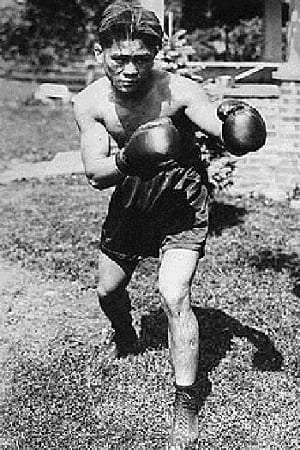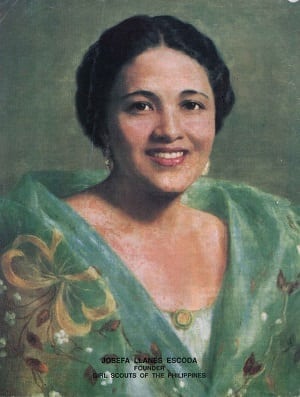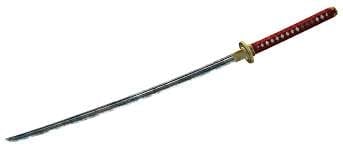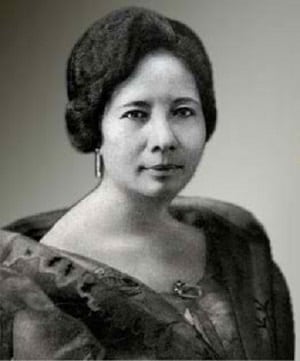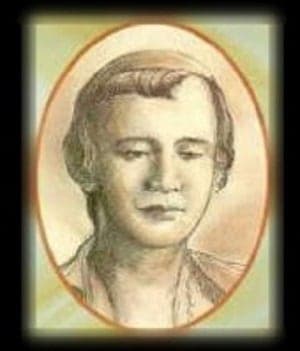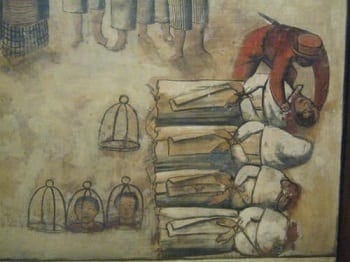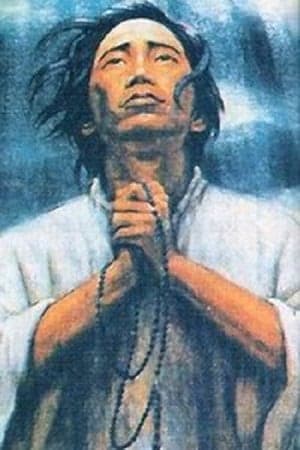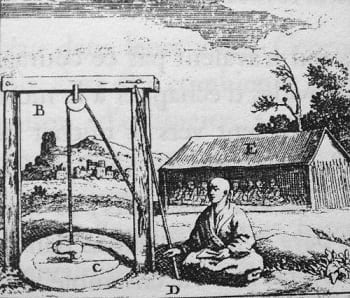5 Pinoy Historical Figures Who Died in Shocking Ways
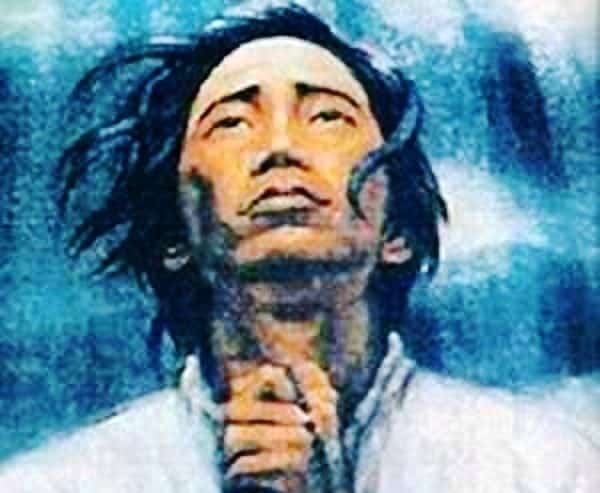
Death is a destination we all share. No matter how invincible some people feel they are, death will just come and bite in times they least expect it. Some will expire the natural way while others will kick the bucket in the most shocking, gruesome methods.
In the case of some notable people in history, their dramatic deaths can be as memorable as the principles they fought for. From Jose Rizal‘s execution to Ninoy Aquino‘s assassination, historic demises are worth studying again and again.
Here are just another 5 notable historical figures whose deaths (and accomplishments) should never be forgotten:
5. Pancho Villa: Died after tooth extraction
Who is he? Born Francisco Guilledo on August 1, 1901, “Pancho Villa” was a Filipino flyweight boxer who put the country on the map after winning the 1923 World Flyweight Boxing Championship. He had a total of 105 professional fights and was put in Ring Magazine’s Hall of Fame in 1961, making him the greatest Asian fighter in boxing history.
Final moments: Days before his scheduled fight against Jimmy McLarnin on July 4, 1925, Villa had his wisdom tooth extracted. This resulted in ulceration and caused his face to swell. Despite his weakness, Villa still fought but ended up losing to McLarnin.
After the battle, he returned to the dentist only to discover an infection. Soon, Villa had three more of his teeth removed. The dentist advised him to take a rest and return for a follow-up examination. However, Villa refused to follow the instructions and went out for a week-long party instead.
He died on July 14, 1925, due to complications of a throat infection known as Ludwig’s Angina. He was only 24.
4. Josefa Llanes Escoda: Beheaded with a Samurai sword
Who is she? Josefa Llanes Escoda was an American-educated Filipina who founded the Girl Scouts of the Philippines in 1940. She studied social work in the US where she met her husband, Col. Antonio Yangzon Escoda, then a reporter from the Philippine Press Bureau. She is also notable for serving as the president of Women’s Clubs of the Philippines during the war.
“Katana”, a Japanese sword.
Final moments: Josefa Llanes Escoda and her husband secretly helped both Filipino and American prisoners-of-war by supplying them with foods and medicines, as well as sending letters to and from their loved ones.
A few months before the war ended, Josefa and her husband were caught by the Japanese. They were later imprisoned and tortured somewhere in Fort Santiago or Far Eastern University. Antonio was executed in November 1944. Josefa, on the other hand, was last seen embarking on a truck along with other captives.
It is believed that Josefa was decapitated with the use of a Japanese sword called katana within the North Cemetery in La Loma. Her body has never been found. [Image source: msc.edu.ph]
3. Aurora Quezon: Ambushed by 200 armed men
Who is she? Known as “The Mother of the Masses”, Aurora Aragon Quezon was the wife of President Manuel L. Quezon. As the first lady, she became an endearing icon who defended women’s rights and gave priority to the public’s medical needs. In honor of her accomplishments, both a province and a Quezon City highway (Aurora Boulevard) were named after her.
Final moments: On April 28, 1949, while on their way to Baler for the inauguration of the Quezon Memorial Hospital, Aurora Quezon and 11 other people were gunned down by some 200 armed men.
Included in the fatalities was Aurora’s daughter “Baby”, who was a UST law student at that time; her son-in-law Felipe “Philip” Buencamino; and Quezon City mayor Ponciano Bernardo.
The murder shocked the whole nation and the blame was immediately put to Luis Taruc, leader of Hukbalahap. However, he denied the accusations, telling that such murder was never planned by their central committee. Subsequent investigations led to a theory that a certain Commander Alexander Viernes (alias “Stalin”) could be the real mastermind behind the ambush.
Although several Huk members were already charged for the assassination, Mrs. Quezon’s unfortunate death remains an open mystery.
2. Hermano Pule: Executed and chopped to pieces
Who is he? Apolinario de la Cruz a.k.a. Hermano Pule was a lay brother from Ospital ng San Juan de Dios. He was a religious man and just like any other indio of his time, Pule aspired to be a priest. However, the Spanish government declined his request and even kicked him out of the hospital.
Frustrated, Pule founded his own religious organization in 1832. Known as Cofradia de San Jose, the group gained solid followers from Batangas, Laguna, and Tayabas.
The inhumane method of “quartering”. (Source: Prof. Michael “Xiao” Chua)
Final moments: After learning about his group’s emerging influence, a priest from Lukban named Manuel Sancho accused Hermano Pule of filibusterism. Then, in October 1841, Spanish troops fought against Pule and his 4,000 members at Alitao. It was a bloody battle where hundreds of women, elderly, and children were instantly killed. The Cofradia was finally defeated by the Spanish army and Pule was later sentenced to death at the Casa Tribunal in Batangas.
Hermano Pule was executed at the age of 26. After he died, his body was quartered and his head skewered by a bamboo pole. His gruesome remains were allegedly displayed at the outskirt of Majayjay to serve as a warning for would-be rebels.
1. San Lorenzo Ruiz: Hanged upside down for 2 days
Who is he? Born in Binondo between 1600 to 1610, Lorenzo Ruiz is known in history as the first Filipino saint and martyr. Accused of killing a Spaniard, Ruiz was forced to escape to Japan along with a group of Dominican priests. There, they ceaselessly spread the message of God as missionaries despite threats from the Tokugawa Shogunate. At that time, Japan was known to persecute Christians, some of whom were sentenced to die in the most shocking and inhumane ways.
“Ana-tsurushi”. (Source: Prof. Michael “Xiao” Chua)
Final moments: Ruiz and 14 other members of his group were captured and later sentenced to death. On September 27, 1637, they were led to the Nishizaka Hill, also known as “Mountain of Martyrs”, at Nagasaki. All of them experienced incredible torture, including the pressing of sharp needles between their skin and fingernails. But Ruiz never gave up his faith.
Finally, he and some of his remaining companions were punished using a traditional torture method called ana-tsurushi or “anazuri.” They were hung upside down with their heads inside a well. Their bodies were also tightly bound to slow down blood circulation. Additional rocks were also used to let the poor victims slowly suffocate from their own weight. Ruiz died 2 days later due to extreme brain pressure and hemorrhage.
FilipiKnow
FilipiKnow strives to ensure each article published on this website is as accurate and reliable as possible. We invite you, our reader, to take part in our mission to provide free, high-quality information for every Juan. If you think this article needs improvement, or if you have suggestions on how we can better achieve our goals, let us know by sending a message to admin at filipiknow dot net
Copyright Notice
All materials contained on this site are protected by the Republic of the Philippines copyright law and may not be reproduced, distributed, transmitted, displayed, published, or broadcast without the prior written permission of filipiknow.net or in the case of third party materials, the owner of that content. You may not alter or remove any trademark, copyright, or other notice from copies of the content. Be warned that we have already reported and helped terminate several websites and YouTube channels for blatantly stealing our content. If you wish to use filipiknow.net content for commercial purposes, such as for content syndication, etc., please contact us at legal(at)filipiknow(dot)net
